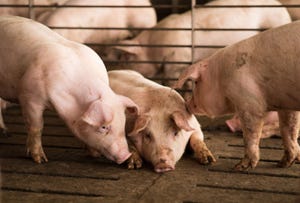What is the right age to wean pigs?
There isn’t an “ideal” weaning age for the industry; there are too many factors that are farm-specific and that includes genetics and management, not just the type of pig you are producing.
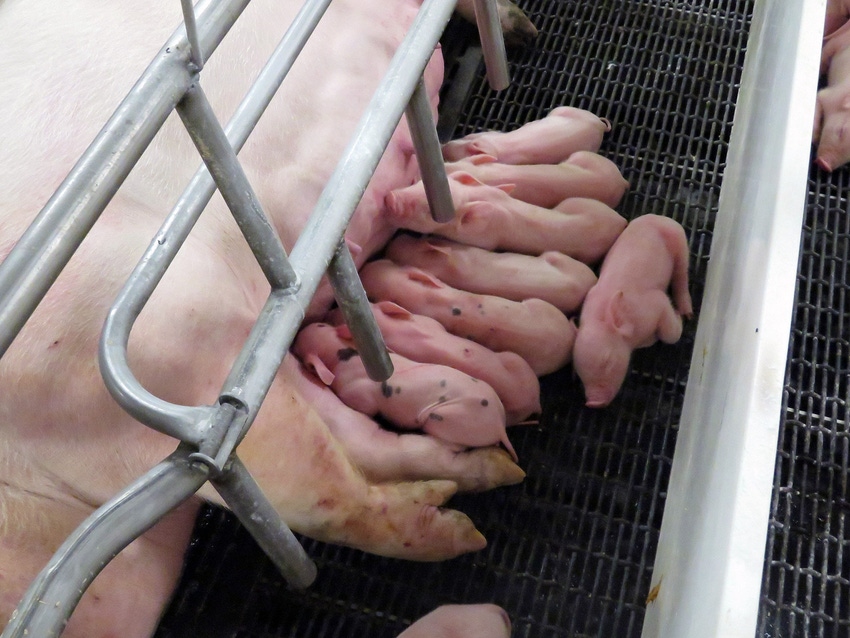
A recent topic of discussion has been around wean age and what is the best wean age for farms. There are a lot of variables to consider in that. Are you selling weaned pigs or are you finishing pigs? Do you want to produce a certain quantity of pigs or are you looking for specific quality of pig?
When we look at the Swine Management Services database there is little difference in wean age between the farms in the top 10% of the database at 20.16 days and farms in the bottom 10% of the database at 21.03 days, in part due to that averages of averages just don’t really tell you much.
The average lactation length for the database is 20.5 days for the last 52 weeks. The average probably isn’t the number to be looking at, but rather how many sows in your farm are being weaned at less than 17 days.
When you are thinking about weaning age then weaning weight comes to mind. Do I increase weaning age to get bigger pigs so I will not need to feed as much of that expensive starter feed?
For this column we are looking at nearly 750,000 farrowing records and then reduced the dataset to 406,000 farrowing records that lactated for 14 to 26 days and evaluating performance after that lactation.
Figure 1 looks at the lactation length and then the following wean-to-service interval by parity. We looked at only sows with a wean-to-service interval of less than 35 days for this chart. Parity 1 females set themselves apart with those weaned at 14 days averaging 8.66 days and levels out around 7.5 days when lactating 19-plus days. Figure 2 combines all parities together and helps illustrate that longer lactation lengths will increase wean-to-service interval because the sows just can’t eat enough feed to meet the demands on their bodies for milk for those older pigs.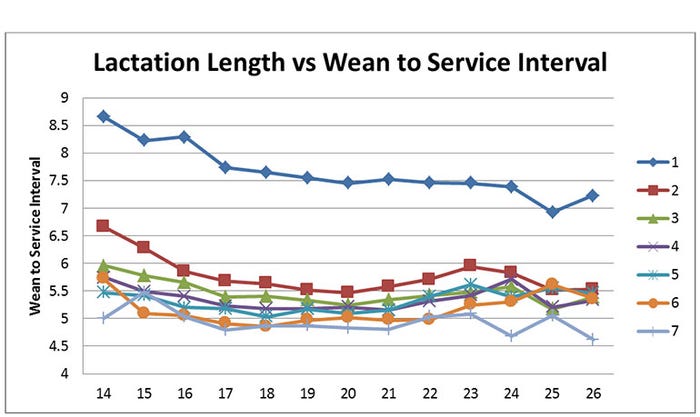
Figure 1: Lactation length versus wean-to-service interval

Figure 2: All parities - wean-to-service interval
When we look at subsequent total born in Figure 3 it shows the advantages of longer lactation lengths in having a higher total born on the next litter. Parity 2 females again are set part with those at 14 days at 12.93 total born and maxing out at 13.98 at 23 days of lactation. Figure 4 shows all parities together and there is a steady increase in total born from 14 days up to 21 days before it levels out. Showing that from a subsequent total born standpoint there isn’t a lot to gain past 21 days of lactation if you need more total pigs born.
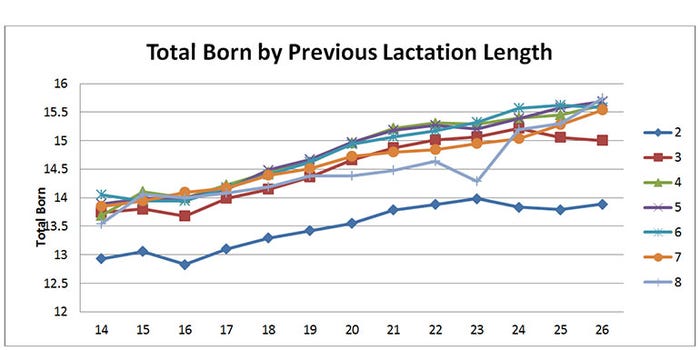
Figure 3: Total born by previous lactation length
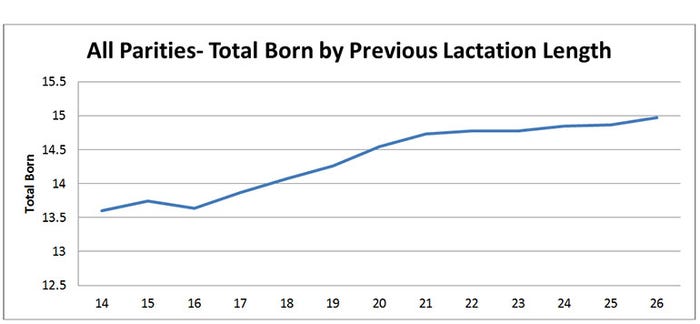
Figure 4: All parities - total born by previous lactation length
The other area to look at is as weaning age goes up litters per sow per year go down. If you are weaning with an average of 19- to 20-day-old pigs your turns of the farrowing crates will be about 13 versus weaning at 25 days of age average that drops to only 10 turns of that crate. If you are weaning 11 pigs per litter weaned so you go from 143 pigs per crate per year to 110 pigs, what does that do to your facility cost per pig? If you are trying to improve the average weaning weight you may want to make sure that no litters are getting weaned before 18 days of age, reviewing feed intake in lactation and see if sows are eating enough feed per day so they can produce more milk. Also take some piglet birth weights to see if your sows coming up to farrow are being fed right the last few weeks for gestation to give you the biggest pig you can get at farrowing.
There isn’t an “ideal” weaning age for the industry; there are too many factors that are farm-specific and that includes genetics and management, not just the type of pig you are producing. However, the sows do tell us that they are going to have better subsequent performance closer to 20 days rather than 16 or 25.
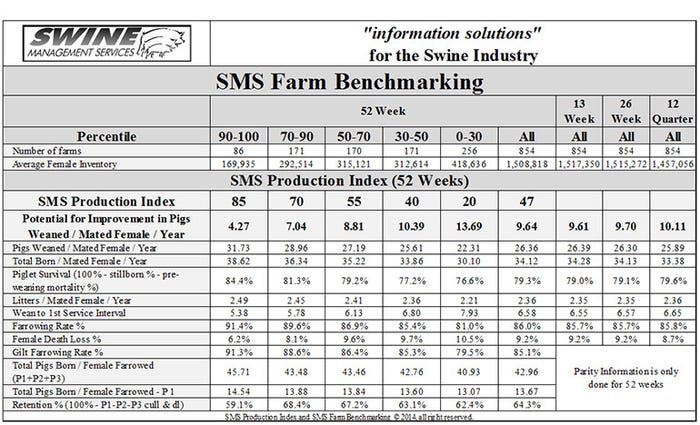
Swine Management Services Farm Benchmarking table
At SMS, our mission statement is to provide “Information solutions for the swine industry.” We feel with the creation of different SMS Benchmarking databases for all production areas we now have more detailed information to share with the swine industry. If your farm would like to be part of the SMS Benchmarking databases, or if you have suggestions on production areas to write columns about, contact Mark Rix, Ron Ketchem or Valerie Duttlinger. We enjoy being a part of the NHF Daily team. Previous columns can be found at NationalHogFarmer.com.
About the Author(s)
You May Also Like


